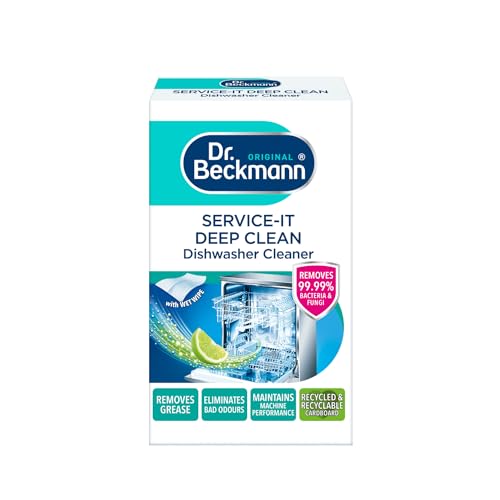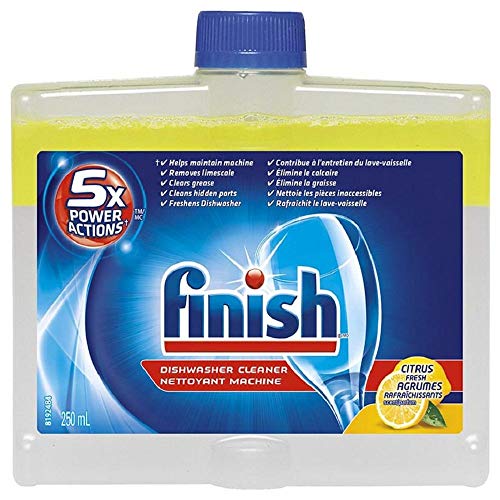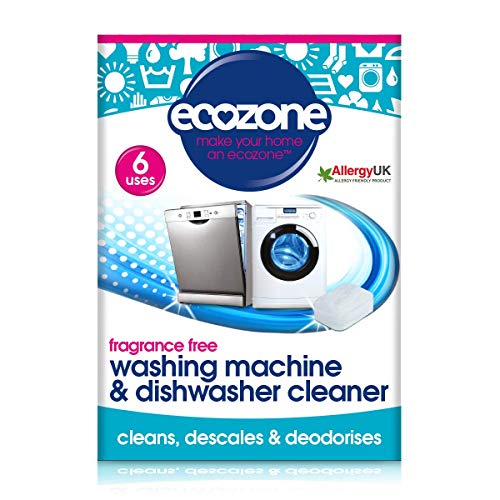How to clean a dishwasher – an expert-approved step-by-step guide for sparkling dishes every time
If your glasses and crockery aren't coming out as clean as you'd expect, it's time for a deep clean
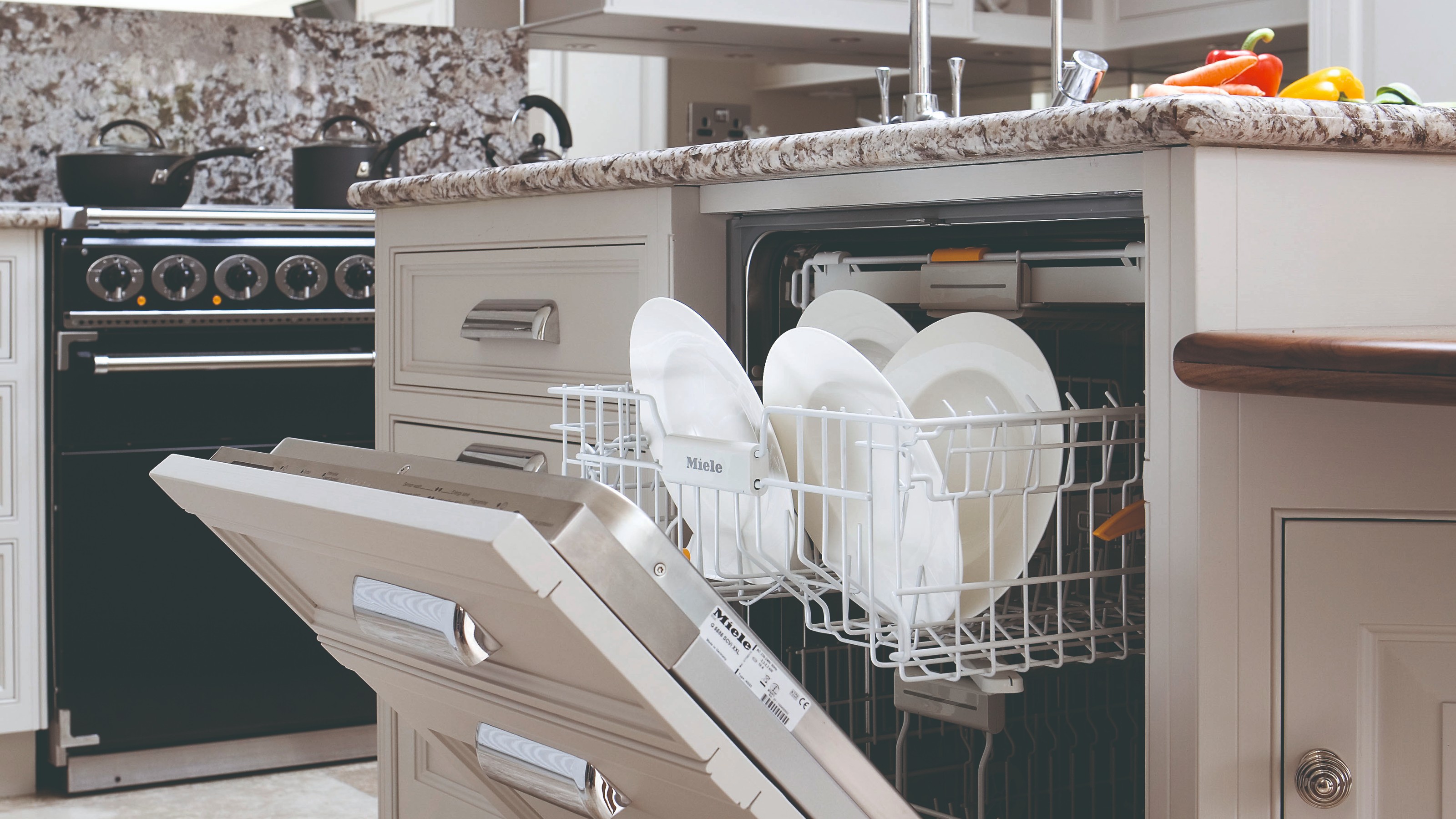
- What you'll need
- 1. Run a hot wash
- 2. Empty the dishwasher
- 3. Clean the dishwasher impellers
- 4. Clean the filter
- 5. Clean the dishwasher drain
- 6. Clean the dishwasher with white vinegar
- 7. Run another cycle
- 8. Clean the exterior
- How to prevent build up in a dishwasher
- Dishwasher cleaning essentials
- FAQs

Many assume that these hardworking appliances clean themselves, and dishwashers are indeed fairly hygienic. However, if you don't know how to clean a dishwasher then you could be wasting time, energy and money with those now inefficient wash cycles.
Whether it's cleaning a dishwasher with vinegar or tackling the dishwasher filter, the good news is that once you know how to clean a dishwasher, it's actually pretty painless and well worth the time and effort.
Here's how to get your faithful dishwasher smelling fresh, looking like new and delivering pristine dishes time after time. Plus, cleaning it will help reduce the amount it costs to run.
By regularly cleaning your machine, you can prevent the build of limescale, bacteria and odours, ensuring perfectly hygienic, fresh dishes.
And Sarah Dempsey, cleaning expert at My Job Quote agrees, 'cleaning your dishwasher regularly is the best way to keep it clean from mould and limescale.'
'Focus attention specifically on the door seal, filter and spray arms. Use white vinegar to target limescale and run it empty on its hottest cycle to help remove food residue and any associated smells.'
While you should deep clean your machine every few months, the frequency of your cleaning should depend on how often your dishwasher is used.
Sign up to our newsletter for style inspiration, real homes, project and garden advice and shopping know-how

What you'll need
- Sheets of old newspaper
- Hot, soapy water or a vinegar-water solution: This white vinegar spray from Miniml is genius.
- A pointed implement, such as a skewer, toothpick or tweezers
- An old toothbrush or a bag the incredible SonicScrubber from Amazon.
- Multipurpose cleaner - We love Miniml's multipurpose cleaner from Amazon with its fresh blood orange scent
- Microfibre cloth
1. Run a hot wash
You'll want your best cleaning products at the ready, but preparation is the key to a successful dishwasher clean. The first two steps will lay the groundwork nicely.
Start by turning on your dishwasher, remove any dirty dishes and cutlery and run a hot wash cycle. When it has finished, turn the dishwasher off at the mains and open the door fully. Spread newspaper on the floor in front of it to catch any drips.

2. Empty the dishwasher
Take out any baskets and cutlery holders/trays that can be removed and soak them in hot, soapy water.
If they're very greasy, use a solution that's one part white vinegar, like Miniml's lemon white vinegar at Amazon, to five parts water.
3. Clean the dishwasher impellers
Remove the spinning arms and wash with warm soapy water.
Choose a small pointed tool, such as a toothpick or tweezers, to clear debris from the water holes, as blocked rotators will affect water circulation. Once clean, simply reinstall it.

4. Clean the filter
Matthew Ayres, Appliance Expert at RDO Kitchens & Appliances, explains, 'Your dishwasher's filter, usually found at the bottom of the machine, is designed to catch food scraps and debris. Over time, this can get pretty grimy.'
'Most filters are removable and can be rinsed under warm water in the sink. If you’re unsure whether yours comes out, have a quick look at your dishwasher manual for guidance.'
If your machine has a filter, pull both parts out and clean off any debris. Soak both the metal tray (the micro filter) and the plastic coarse filter in soapy water, then rinse them through and put them back into your dishwasher.
To stop this from getting too bunged up, it's worth checking your dishwasher filter once a week.
'For a deeper clean, soak the filter in warm water mixed with two cups of white vinegar for around 20 minutes before rinsing and reinstalling,' explains Matthew.
5. Clean the dishwasher drain
Pull out the bottom rack and look at the dishwasher floor, especially the drain, and remove any build-up.
Using a toothbrush or a SonicScrubber from Amazon and a multipurpose cleaner like Miniml's multipurpose cleaner from Amazon, scrub the drain well, then rinse.
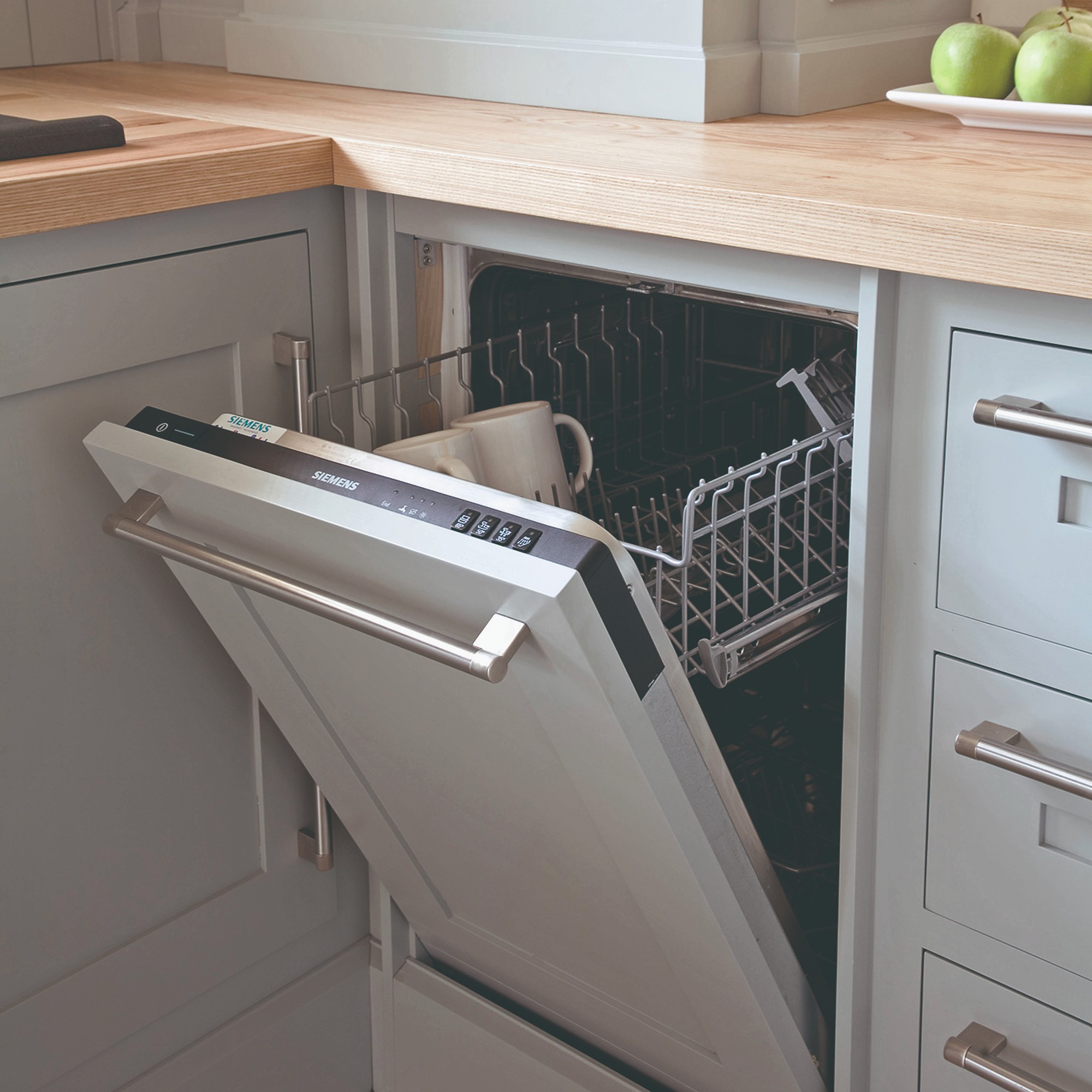
6. Clean the dishwasher with white vinegar
We're big fans of cleaning with white vinegar, and it's the perfect product for giving your dishwasher a deeper clean.
'Fill a small cup with the vinegar, making sure it sits securely in the top rack,' advises Andrea Pesce, appliance expert at Domestic & General. 'Then run your dishwasher on an empty hot cycle to allow the vinegar to work its magic. Never put white vinegar in a full wash as its acidic nature can cause damage to your dishware.'
Knowing how to clean a washing machine with vinegar is a really useful addition to your cleaning schedule, so make sure to do this a couple of times a year. 'Repeating this every three to four months can help you maintain a well-working appliance and help keep the need for a dishwasher repair at a minimum.'
7. Run another cycle
Place the clean removable racks back inside the dishwasher and pour a cupful of dishwasher salt into the filter, and run it on a rinse cycle to finish the deep clean.
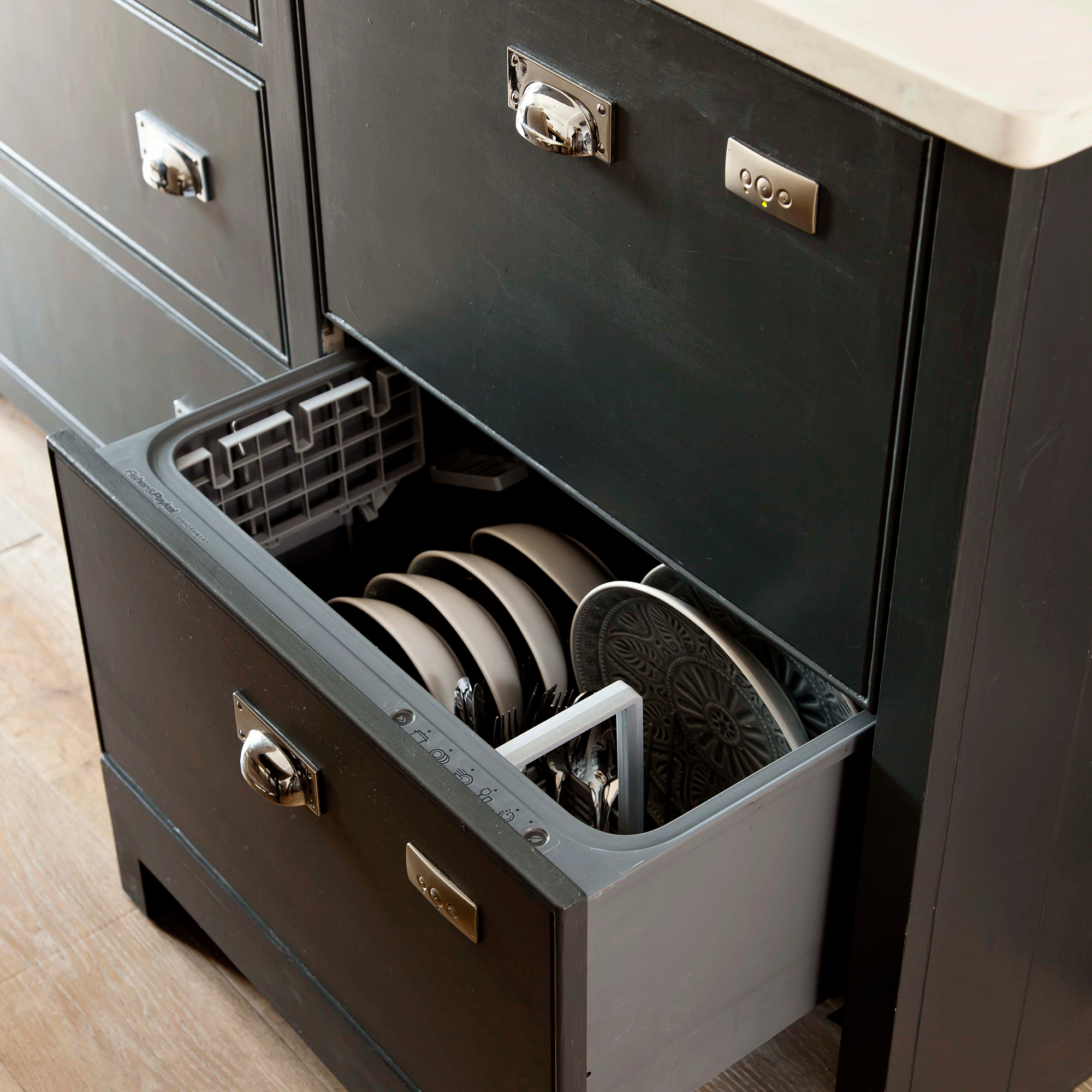
8. Clean the exterior
'Remember, the door and door-seal do not get reached by the water from the spray arms and so these will need to be wiped down to remove any food or detergent residue,' says Sophie Lane, product training manager for Miele GB. 'This can just be done using a clean, damp cloth.'
The best way to make sure the whole exterior is clean is to check the sides and hinge areas, including the rubber gasket around the door.
Then wipe down the door with a cloth and multipurpose cleaner, taking care to clean around the buttons.

Part of the award winning training team at Miele GB, Sophie is the go-to person for advice on all sorts of subjects - from tips on how to deep clean the home ready for spring to how to choose the best appliances for the kitchen.

How to prevent build up in a dishwasher
Once you've cleaned your dishwasher, it's good to know how to prevent limescale from building up, and luckily, there are a few easy ways to do this.
'Limescale buildup is common in hard water areas and can impact both cleaning performance and the longevity of your appliance,' explains Jessica Rhodes, Product and Marketing Manager at ASKO.
To remove limescale effectively, it’s best to top up your dishwasher with salt and rinse aid which will help to get a better clean on your dishes and glasses.
- Top up your dishwasher salt: Are your dishes not coming out as sparkling as you'd expect? The solution could be to add more dishwasher salt to the machine. Dishwasher salt softens the water running your machine and stops limescale – the cause of those pesky marks – from building up.
- Add rinse aid: While salt shifts limescale, rinse aid basically makes sure no water is left behind on your dishes and glassware. Any leftover water can leave marks, but rinse aid prevents this by stopping water droplets from 'sticking' to your crockery.


Dishwasher cleaning essentials
If donning a pair of marigolds isn't up your street, these brilliant products will do the hard work for you.
FAQs
How do you get rid of a bad smell in the dishwasher?
To prevent bad odours, you need to make sure you're using a suitable washing programme for the level of soiling on your dishes and the number of dishes you're washing.
It's also important to make sure your dishwasher is not overloaded, as this – and incorrect stacking – can cause poor washing results. So you've got reason to be annoyed if someone's stacking isn't up to scratch.
Lastly, learning how to clean a dishwasher will keep bad smells at bay.
How do I clean my dishwasher with hard water?
If you live in a hard water area and can afford it, consider investing in a water softener system, which removes hard minerals from water. It goes under your sink and can be plugged up to your dishwasher, washing machine and shower.
Using dishwasher salt is also a gamechanger for hard water areas, so make sure you're using this and in the right way.
How do you deep clean a dishwasher?
We asked Jessica Rhodes, Product & Marketing Manager at ASKO how to deep clean a dishwasher the right way.
'It’s important to do a deep clean of your dishwasher a couple of times a year to maintain optimal performance, and to remove any unpleasant smells,' she explains.
'Firstly, remove the filter from the base of the dishwasher and rise under warm water. Using a soft brush, gently scrub away any trapped debris before replacing it securely.'
'Next, clean the spray arms by detaching them and rinsing them thoroughly. If any spray holes are clogged, use a toothpick or fine wire to remove blockages, ensuring water can circulate properly.'
'The interior of the dishwasher, including the door edges and rubber deals, should also be wiped down with warm soap water and a cloth to remove any lingering residue.'
'For a final deep cleaning step, run a hot cycle with a dishwasher approved cleaner, which is specifically formulated to break down grease and bacteria without harming the internal components.'
Sure, it takes some elbow grease, but put a little effort in and you'll be rewarded with not only sparkling clean dishes and glassware, but a dishwasher that will run more efficiently for longer.

Amy Cutmore is an experienced interiors editor and writer, who has worked on titles including Ideal Home, Homes & Gardens, LivingEtc, Real Homes, GardeningEtc, Top Ten Reviews and Country Life. And she's a winner of the PPA's Digital Content Leader of the Year. A homes journalist for two decades, she has a strong background in technology and appliances, and has a small portfolio of rental properties, so can offer advice to renters and rentees, alike.
- Millie HurstSenior Content Editor
- Jenny McFarlaneSenior Digital Editor
